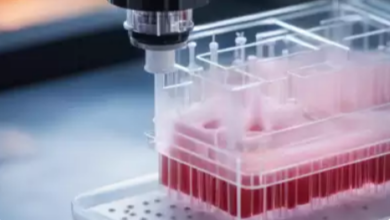
As the winter holiday season approaches and people gear up for indoor gatherings and travel, COVID-19 cases in the United States have been on the rise for the past month. In response, many individuals are turning to home antigen tests to check for potential infections. These tests typically provide a simple “virus” or “no virus” result, but some scientists suggest that the intensity of the color change in the test window may offer additional insights into the course of illness, indicating whether it’s improving or worsening.
Despite the potential utility of interpreting color intensity, it’s crucial to note that these tests were not initially designed for quantitative analysis. Dr. Paul Drain, an infectious diseases physician and researcher, emphasizes that the assays lack the official authorization to quantify the amount of virus in a sample.
COVID
However, some experts argue that the intensity of the test line does correlate with the amount of viral antigen present. The tests use antibodies that react to specific viral proteins, and the visual line is composed of millions of antibodies attached to a dye. The more virus present, the more dye molecules align on the line.
Physician and immunologist Michael Mina suggests that home antigen tests, although not the sole method for assessing illness, offer a valuable way to monitor viral activity. By observing changes in color intensity over a few days, individuals may gain insights into the progression of their infection.
Mina underscores the importance of having multiple tests on hand for effective monitoring. A single test with a faint line can leave individuals uncertain about the stage of infection—whether it’s at the beginning or near resolution. Regular testing and observing changes in line intensity can help individuals gauge whether their immune system is effectively combating the virus or if medical attention is warranted.
Despite the potential usefulness of home antigen tests, Mina advises against drastic changes in behavior solely based on test results. For instance, individuals should continue to follow safety measures, such as masking, especially in large gatherings, regardless of negative results. If a test is positive, it’s crucial to adhere to CDC guidelines, including staying home and wearing a mask during the recommended period.
However, experts caution against overinterpreting test results and emphasize that serious symptoms may not always correlate with line intensity. Human error, such as improper swabbing, can also affect the reliability of test results. While multiple tests over time can provide a helpful trend, switching between test brands may introduce variability.
Although purchasing multiple tests can be expensive, the U.S. government and some health centers offer free or low-cost options to make testing more accessible. When used correctly, home antigen tests can play a role in making informed decisions about gatherings and contribute to public health efforts.




